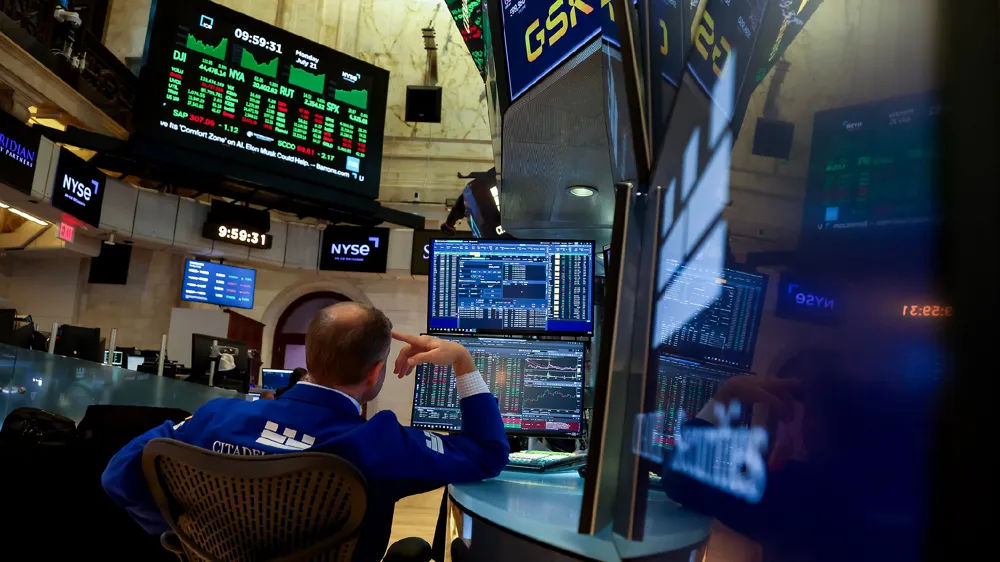US Stocks Close Mixed Following Fed Decision on Rate Cuts

US stocks concluded trading on a mixed note on Wednesday following the Federal Reserve's decision to maintain interest rates at their current levels during its July meeting.
The Dow Jones Industrial Average fell by 171.71 points, equivalent to a decline of 0.38 percent, ending the day at 44,461.28. The S&P 500 also dipped, dropping 7.96 points or 0.12 percent, to close at 6,362.9. Conversely, the Nasdaq Composite experienced a modest increase, rising by 31.38 points, or 0.15 percent, reaching a total of 21,129.67.
In terms of sector performance, eight out of the 11 major sectors within the S&P 500 closed lower, with the materials and real estate sectors suffering the most significant losses, falling 1.99 percent and 1.43 percent respectively. In contrast, the utilities and technology sectors saw slight gains, increasing by 0.69 percent and 0.43 percent respectively.
The Federal Open Market Committee, amid internal disagreements, opted to keep its benchmark interest rate unchanged. This decision came despite opposition from US President Donald Trump as well as dissenting votes from two key officials within the committee.
The FOMC voted in favor of holding the federal funds rate where it currently stands, within the range of 4.25 percent to 4.5 percent, with a tally of 9 to 2. This rate governs overnight lending practices between banks and has wider implications for interest rates across the economy. Federal Reserve Chairman Jerome Powell indicated that the Fed would bide its time to assess the impact of tariff policies on inflation.
Dissenting opinions within the Fed surfaced for the first time since 1993, with Vice Chair for Supervision Michelle Bowman and Fed Governor Christopher Waller both advocating for rate cuts due to their belief that inflation is manageable and that the labor market is beginning to show signs of softening.
On the economic front, newly released data from the US Department of Commerce revealed that the US economy expanded at an annualized rate of 3 percent in the second quarter, significantly surpassing economists' expectations of a 2.3 percent growth.
In the technology sector, major stocks exhibited mixed outcomes. While companies such as Apple, Tesla, Amazon, and Meta experienced slight declines, semiconductor giants Nvidia and Broadcom each reported an approximate gain of 2 percent. Additionally, Microsoft and Alphabet recorded modest increases.
Read These Next

Growth and Risk in the Battery Sector: Annual Report Insights
The annual report highlights the company's strategic innovations and expansions in the battery sector, showcasing financial growth while outlining potential risks associated with raw material supply and foreign exchange fluctuations.

Trump announces 15% tariffs in South Korea trade deal
President Trump has announced a trade deal with South Korea, setting new tariffs at 15%, down from the threatened 25%. The deal includes a $350 billion investment, aimed at boosting economic cooperation and industrial alignment, but also raises questions about the potential for unintended consequences and the differing interpretations between the U.S. and South Korea over the utilization of funds.

Can China and EU Collaboration Match Rapid AI Factory Growth
The EU plans €10 billion for 13 AI factories, boosting China-EU collaboration in tech sectors like green energy and healthcare.
